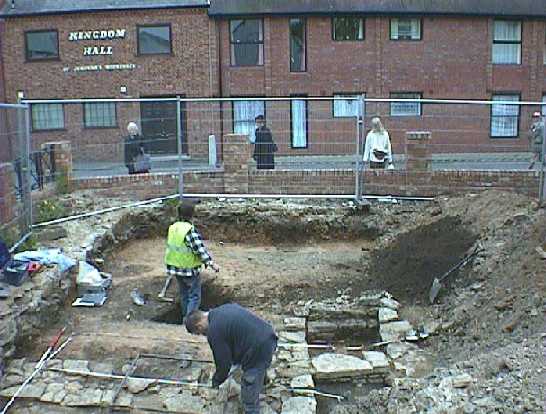
Darren Miller
Field Officer
Worcestershire County Council Archaeological Service

Darren Miller writes
An archaeological evaluation is being undertaken at 26 Cowl St., Evesham in accordance with Wychavon District Council's planning policy relating to archaeology.
The site is in an area of archaeological interest, forming a part of the medieval town of Evesham laid out in the 12th century and in 1997 a medieval stone-lined cellar was observed to the north of the site, suggesting the possibility of further remains in the vicinity.
This expectation was confirmed in the first trench to be excavated, which contained the remains of a substantial medieval building.
The eastern half of the building (closest to the street) was removed along with the foundations of the last building to occupy the site, although the western half survived in a good state of preservation.
The walls were constructed of unmortared stone (lias) faced with mortar, and may have continued in stone up to the level of the roof, or formed the foundation for a timber superstructure : a large quantity of roof tile fragments were recovered from layers butting the west wall of the building suggesting the former.
In addition, a small annexe was attached to the south wall of the building which is interpreted as the lining of a garderobe or earth-closet : pottery from the fill of this feature has been dated provisionally to the 13th century, although from previous observations, the building itself may be of 12th century date.
In the context of the period, the building represents a major investment in materials and labour, and suggests that its owner may have had considerable wealth and status in the town.
Further excavations on the site will investigate the long, narrow plot behind the building, which may contain evidence of "backland" activities including horticulture and small scale industries.
The results of the evaluation will inform the design of the proposed development, in order to minimise its impact on the archaeological remains.
A summary of the results will be published in the Transactions of the Worcestershire Archaeological Society.